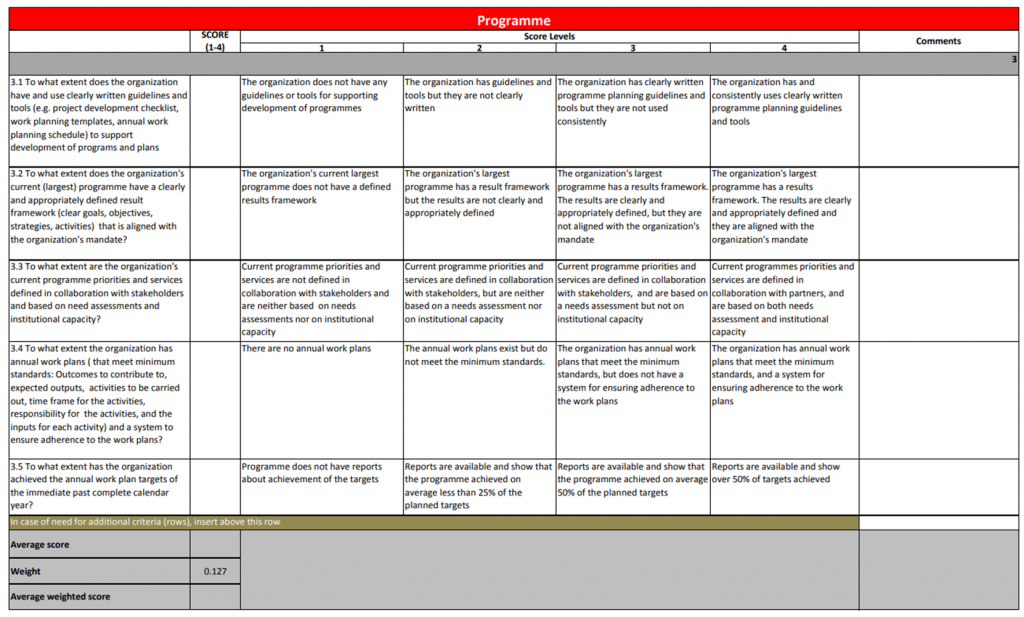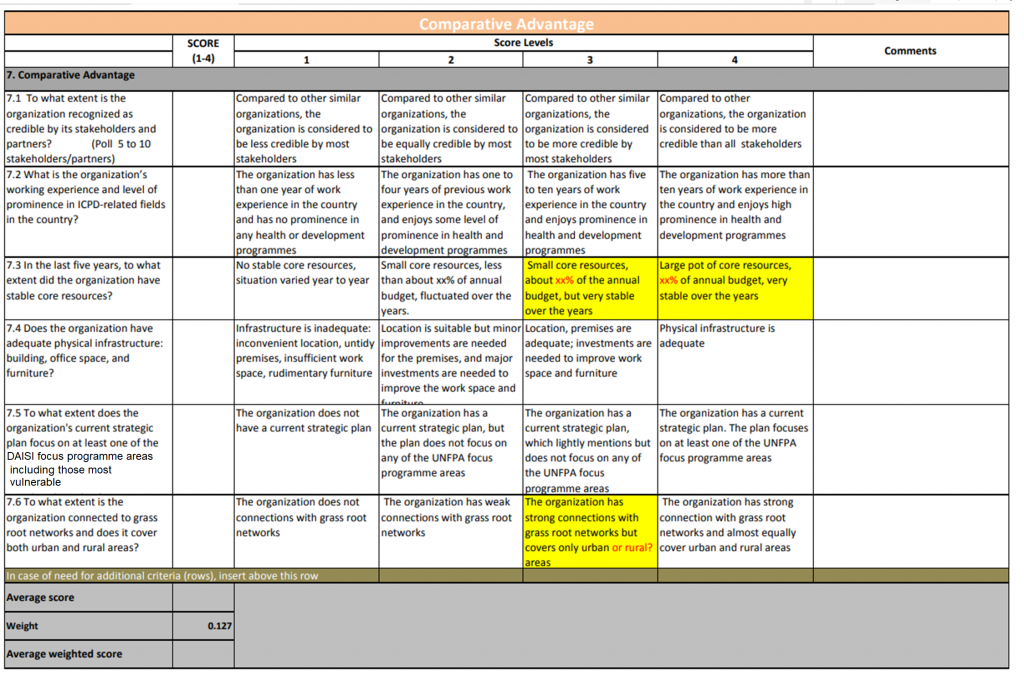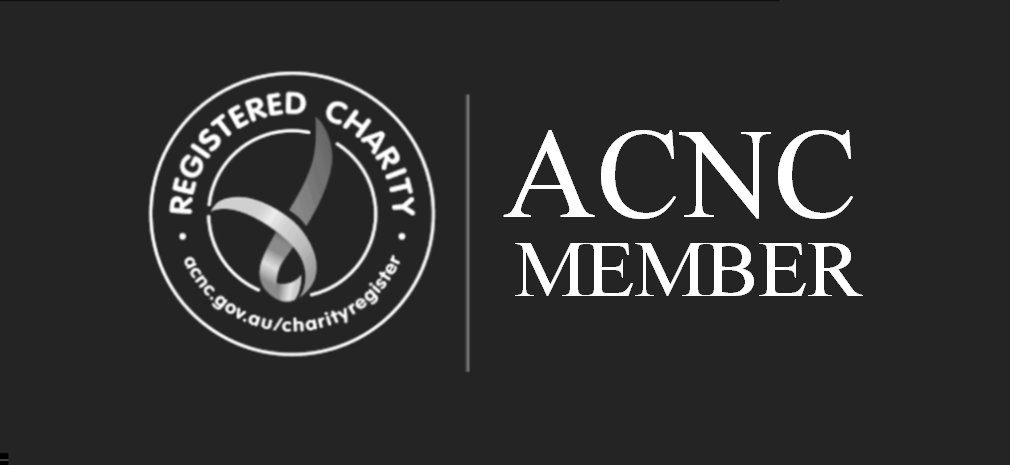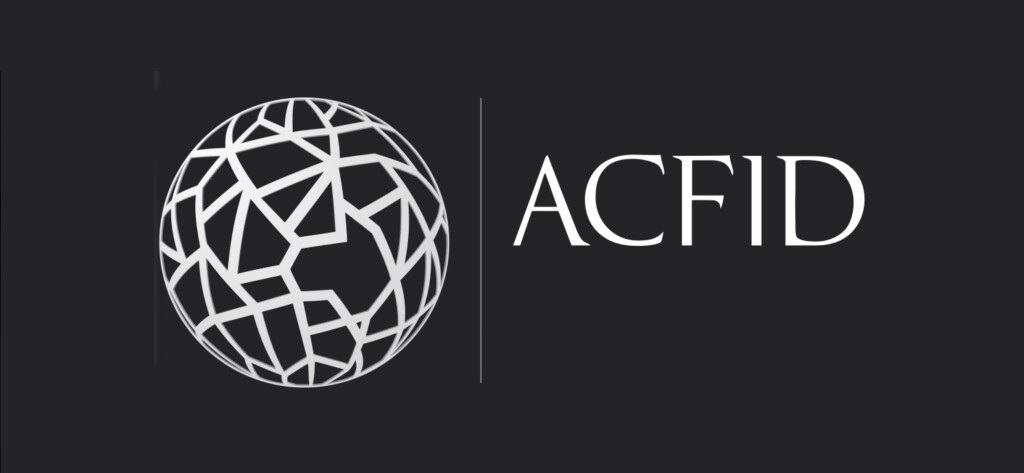.
PURPOSE OF THE TOOL?
- The purpose of this tool is to assess whether an organization has the necessary capacity to implement a DAISI supported programme, and identify any weak areas that need improvement
to raise its capacity to the minimum necessary levels. When used at the beginning and end of interventions for improving capacity, it can serve as a tool for measuring results of the capacity building interventions.
STRUCTURE OF THE TOOL
2.The tool consists of four sections: A: Introduction and Instruction B: Identification Information C: Overall Assessment D: Assessment Matrices (consisting of nine dimensions), and E: The Capacity Building Recommendations.
3.The Overall Assessment sections consists of a summary of the assessments by dimension. The sections fill automatically upon completion of the assessment of the dimensions
4.The nine dimensions include: 1) Governance and Leadership 2) Human Resources 3) Programme 4) Monitoring and Evaluation 5) Financial Management 6) Procurement Systems, 7)
5.Comparative Advantage 8) Knowledge Management 9) Partnerships. Each of these dimensions is assigned a weight, which is used to calculate the final assessment score. (Weights are shown on each assessment sheet).
6.Each dimension consists of items (statements or questions) which constitute the primary assessment units. For each dimension, additional assessment criteria (row) that may be more relevant to the unit or Implementing Partner can be added simply by inserting a row above the ARMY GREEN COLOR row. Additions made by inserting above this row are automatically included in the calculations of the overall score.
7.An extra column is provided for comments. These comments should provide additional information to be used to decide on whether the organization should be enrolled as a partner and on
HOW TO USE THE TOOL?
8.The recommendations for strengthening the capacity of the organization.
9.Fill the Background and identification section
10.Respond to each item, using the drop down facility provided.
11.Make comments, if any
12.Check on the Overall Assessment and use the results to inform decision-making
13.Fill the table for capacity building recommendation
14.The final score should be used to inform the decision of whether to add the organization to the roster of UNFPA implementing partners. The recommendation for capacity building should inform a plan to intervene and improve the capacity of the partner
DECISION POINTS
15.If the Overall Weighted Score is less than 1.5 (or 1.2 if Financial and Procurement sections omitted), consider not enrolling the organization as an implementing partner.
16.If the Overall Weighted Score is between 1.5 and 2.5 (or 1.2 and 2 if Financial and Procurement sections omitted), the organization needs capacity building support urgently; if the score is between 2.5 and 3.5 (or 2.1 and 2.8 if Financial and Procurement sections omitted) , the organization needs capacity building, but not urgently; if the score is above 3.5 (2.8 if Financial and Procurement sections omitted) the organization hardly needs capacity building support.
WHO SHOULD USE THIS TOOL?
17.This tool should is intended for use by the DAISI Executive (including CEO), Country Program officers. And Risk Assessment Committee (RAC).
WHEN SHOULD THE TOOL BE USED FOR.?
- This tool is used to assess the Implementing Partner whether they be new or existing:
(a) New implementing partners: The assessment should be done at the time of original selection of a new Implementing partner (no AWP in the past five years) at any time during the programme cycle.
(b) Existing implementing partners: The assessment should be conducted upon entering into the next programme cycle, and then every two programme cycles after that. In addition, the assessment can be conducted any time a UNFPA manager believes the implementing partner’s structure has experienced significant changes since the last assessment
WHO SHOULD ADMINISTER THE TOOL? - The tool can be administered by : (a) a DAISI member (b) an independent consultant, with knowledge in the areas of DAISI’s programmes.
IMPLEMENTING PARTERN CAPACITY ASSESSMENT TOOL - The tool should be administered using the following data collection methods:
a. Document review and/or individual interviews: review relevant documents and/or interview relevant individuals to compile preliminary responses to the questions and statementsposed in the tool.
b. Focus Group Discussion (FGD): conduct at most two focus group discussions of five to seven participants each, to verify and finalize the preliminary responses. If one FGD is conducted, ensure a good representation of the key units of the organization. If two FGDs are conducted, separate the groups by seniority levels: a group of senior staff and a group of junior staff who can speak competently about the topics in the assessment tool. The number of FGD should depend on the staff size – e.g. more than 50 staff members (two FGDs).
c. Some questions in the tool require consultation with peer organizations to the organization being assessed. In this instance, at least 3 peer organizations should be consulted
The tool is designed to be administered using the Excel spreadsheet to benefit from automated functions. However, if using the spreadsheet is not feasible, hard copies should be printed and used to administer the tool. In such instances, the overall assessment should not be filled manually, rather it should be completed automatically upon entering the hard copy data into the Excel spreadsheet.
STEPS FOR ADMINISTERING THE TOOL - Make an appointment to brief the organization about the assessment process;
- Brief the organization – explain the two steps, indicate the documents that you will need for the first step, agree on how you will access these documents, and set dates for the focus group discussions. Explain that the tool will also be used to suggest capacity building areas and interventions, and to track the results of the capacity building interventions that were accepted and implemented;
- Review the documents, and conduct individual interviews, as needed, to make a preliminary assessment;
- Share the preliminary review with relevant staff members of the Country office and ask for their comments, if any;
- Identify the assessment area/questions for which you need more information;
- Conduct the FGDs focusing on the areas identified in step 5;
- Finalize the assessment of each dimension;
- If an item is not assessed, leave the assessment column blank;
- Submit the final results to the unit manager (country representative) to inform selection and capacity building decisions;
- Keep on file a copy of the filled tool.
NATURE OF ORGANISATION
Name of organization to be assessed:
Country Programme Office/Head Office/Risk Assessment Committee (doing assessment):
Year:
Name of DAISI member in charge of assessment:
TYPE OF ORGANISATION
Government:
Local:
Private Sector:
Bilateral development agency:
Mutilateral development agency:
International Organisation:
YEAR
PROGRAME AREAS OF ORGANISATION’S WORK
Preventative Health Care (Population and Development)
Primary Healthcare (Medicine and Surgery)
Vulnerable persons health?
Gender Equality
Reproductive Health Services
Adolescent Sexual Health
HIV/AIDS
OVERALL ASSESSMENT (SCORE OUT OF 4)
Governance and Leadership
Human Resources
Programme
Monitoring and Evaluation
Financial Management
Procurement Systems
Comparative Advantage
Knowledge Management
Partnership
Average Score
Weight 0.127
OVERALL WEIGHTED SCORE













